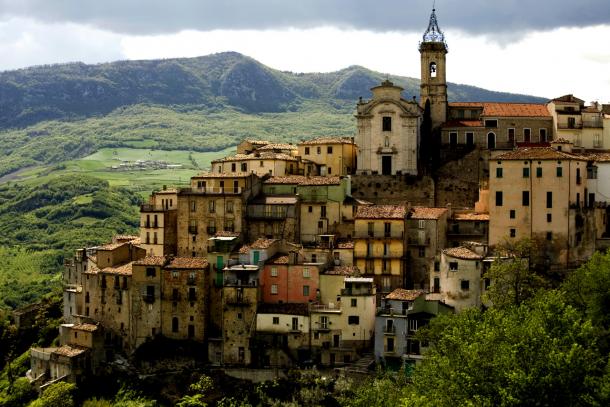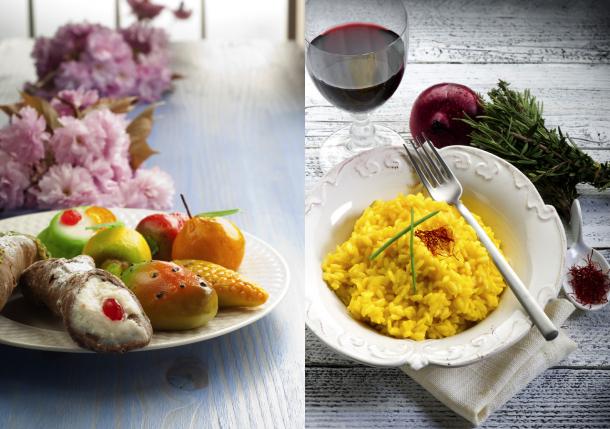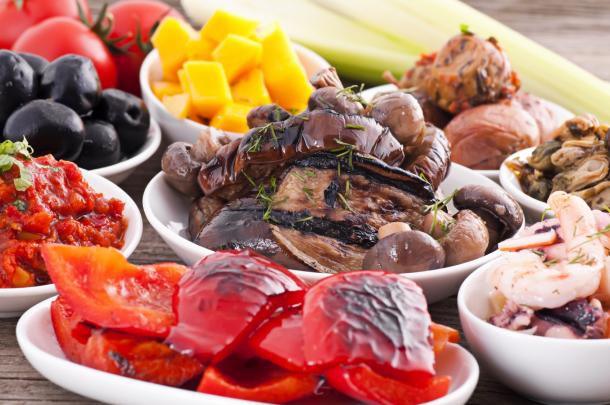Italian Regional Cooking: Diversity in Local Gastronomy
Like much of Europe, Italian cuisine traces back to 4 BC. Today, while Italy is one country politically, there are twenty distinct regions with unique dietary preferences and local recipes, developed through centuries of historical division and turmoil. While internationally favored foods and cooking techniques have been integrated into these traditions, foreigners are constantly amazed by the diversity of Italian cuisine when traveling from region to region. Even when dishes carry the same names, they are often prepared in vastly different ways. The regions may only be a few miles apart, but Italians will always insist the cooking from their home is superior to those around them. This campanilismo, or extreme pride that Italians feel for their home town, is universal in Italy.

Quite obviously, as modern technology brings the world closer together, there is blurring of the lines between the regions. Pizza, once only found in Naples, can be found across Italy. Historically, olive oil has been the dominant fat in southern Italian regional cooking and butter preferred further north. Recently, due to the popularity of the Mediterranean diet, olive oil is beginning to replace butter.
There are areas in northern Italy where rice and polenta are the staple starches, but pasta can be found everywhere. Still, dried pasta, made from hard wheat, is generally found to the south, whereas fresh pasta, made with soft flour and eggs, is more popular in northern Italian regional cooking. Many of these fresh pastas are wrapped around flavorful fillings to make ravioli or tortellini.
Another Italian regional food eaten across Italy is bread. But there are at least as many styles of bread as there are towns. Tuscany’s saltless pane toscano is either eaten plain, seasoned with olive oil and garlic and grilled, or used in other recipes such as panzanella (bread salad) or the bread thickened bean and vegatable soup called ribollita. Alto Adige uses coarse rye flour to make bauernbrot, a dense bread eaten with a regional prosciutto called speck. Turin serves crisp bread sticks known as grissini and Sardinia makes a thin brittle bread called carta da musica.

Salumi, the salt or air cured meats that make Italian cuisine famous, are made differently in each region. The majority of these preserved meats are made from pork, though beef, game and poultry are sometimes used. Whole cuts of pork are used for making hams and prosciutto, and chopped meat is used for many varieties of sausages, including the pistachio studded mortadella from Bologna.
Italy produces over 450 types of formaggio, or cheese, many of which are exported internationally. Parmigiano Reggiano may be the most familiar to tourists who enjoy grating the hard, grainy cheese over food. Locals prefer to eat it out of hand, sometimes with fruit and wine. Each region has locally made cheeses but many of the less known are simply too delicate to export. The best way to experience Italian cheese is to visit.
Tourists often marvel at the array of desserts in Italian cuisine. Emilia Romagna is known for their fresh fruit desserts, such as apple cakes. Sicily specializes in ricotta and marzipan desserts. Many people enjoy their apples and pears poached in red wine. Tuscan cooks generally bake their desserts, including nut and fruit cakes and chestnut crepes. Lombardia cooks bake cornmeal into torta sbrisulona, an almond flavored butter cake. Miascia, a rosemary flavored fruit and bread pudding, and panettone, a raisin and citron flavored Christmas bread, also come from Lombardia.

While modern Italian regional cooking is notably diverse, what all of the regions have in common is a devotion to high quality ingredients. Rather than serving elaborate dishes, each recipe features as few as four ingredients. Each flavor shines through, thanks to the elegant simplicity. One advantage to Italy’s preference for simple foods is the ease of preparation. The majority of Italian cooking recipes are easy to prepare. This is one reason for the international popularity of Italian food.
Unfortunately there is also a dark side in this global success. While many foreign chefs understand very well the role of fresh ingredients when cooking Italian food, most often then not Italian cuisine has been bastardized and reduced to mass produced fast food. Pizza, a dish with Neapolitan roots, may be one of the most popular fast foods in the world. It can be found from the United States to India with varying degrees of dissimilarity to the authentic item.
In the end, in order to experience the full range of Italian regional cooking, it may be necessary to visit Italy in person. However, if care is taken to find ingredients at the peak of ripeness, it is possible to learn how to cook Italian food properly anywhere in the world. By clicking on the following map you will get a quick glimpse of the endless variety of Italian regional cooking.
